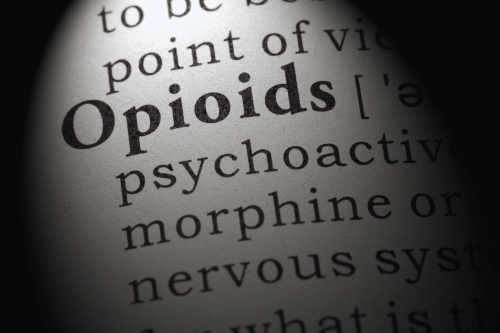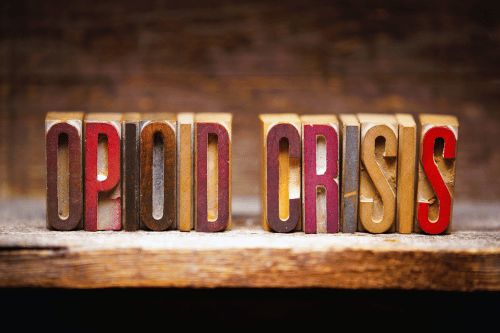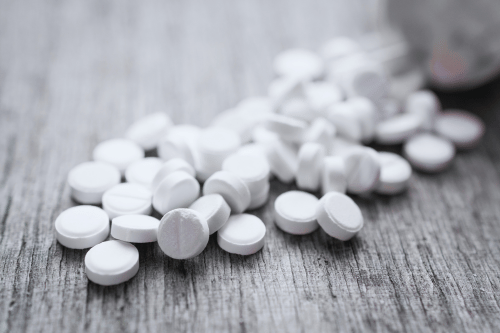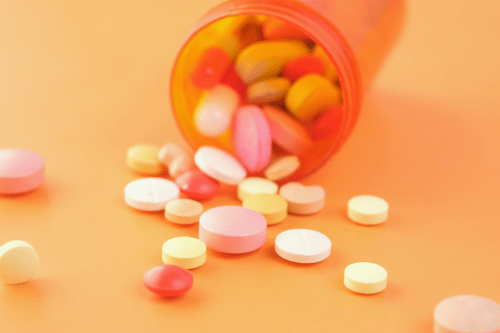

Understanding how long opioids stay in your system is essential for anyone using them for pain relief, under medical supervision, or struggling with opioid misuse. These drugs belong to a class of drugs that interact with opioid receptors in the brain and spinal cord to alter the perception of pain. Knowing the detection window for different testing methods can help individuals make informed decisions and seek proper support when needed.
Opioids are a class of drugs derived from the opium poppy plant or synthesized in labs. They include natural opioids, semi-synthetic opioids, and synthetic opioids. These drugs are commonly prescribed to treat severe pain and chronic pain, but they also carry a high potential for addiction.
Some common opioids include oxycodone, hydrocodone, morphine, and fentanyl. These prescription drugs are used for both acute pain and chronic opioid therapy. However, illicit opioids like heroin are often misused for their sense of euphoria and feelings of euphoria, contributing to the growing opioid crisis.
The duration opioids remain detectable depends on the type of opioid, dosage, and the individual’s metabolism. The drug’s half-life—how long it takes for half the drug to be eliminated—is a key factor in determining how long opioids linger in the system. A drug with a longer half-life, like long-acting opioids, will stay in the body longer than short-acting opioids.
Individual metabolism, influenced by genetic factors, plays a major role in how quickly the body breaks down substances. A slower metabolism may cause opioids to accumulate in the body, increasing the detection window during testing. Additionally, the efficiency of liver function and kidney function is crucial to the elimination of opioids, as these organs filter toxins and help expel them through urine.
People with underlying medical conditions—such as liver disease or impaired renal function—may process opioids more slowly. Factors like body composition, including body fat and fatty tissues, also affect how long opioids are stored in the body. The higher the body fat percentage, the more likely it is that opioids will be retained for longer periods of time. Other contributors include hydration level, medical history, and whether opioids are taken continuously or in single doses.

Different drug testing methods vary in their detection windows, and each has its own level of sensitivity and use case.
Urine tests are the most widely used testing methods for detecting the presence of opioids. These tests can detect short-acting opioids like heroin and codeine for approximately 1–3 days after use. Long-acting opioids, such as methadone or extended-release morphine, may remain detectable in urine for up to 7 days or more depending on the individual’s body weight, hydration level, and opioid dose.
Urine testing is often used in outpatient settings like Sullivan Recovery to monitor patients during treatment for opioid misuse or Substance Use Disorder. It is a reliable tool for tracking compliance and spotting early signs of relapse.
Blood tests have a much shorter detection window, generally identifying opioids within a few hours to about one day after use. Despite their limited timeframe, they are useful for measuring opioid dose in emergency medical settings. Blood testing provides real-time data on recent drug use, making it ideal for diagnosing opioid overdoses or monitoring patients receiving prescription opioids.
Since opioids circulate through the bloodstream before being stored in tissues, blood tests offer precise insight into active levels of opioids in the body. However, their invasiveness and short window make them less suitable for routine screening.
Saliva tests are gaining popularity due to their ease of use and quick turnaround. They are ideal for detecting opioid use that occurred within 24 to 48 hours. These tests are frequently used in workplaces and roadside settings, particularly when testing needs to reflect recent drug use.
Saliva testing identifies drugs before they are metabolized, making them useful for determining immediate exposure. For individuals undergoing opioid addiction treatment, saliva tests can be an effective monitoring tool, especially in outpatient rehab programs like those offered by Sullivan Recovery.
Hair tests offer the broadest detection window, capable of identifying opioid use for up to 90 days. As opioids are absorbed by hair follicles through the bloodstream, they become embedded in the hair shaft, providing a long-term record of substance use.
Hair testing is particularly helpful in legal or forensic contexts where a history of drug use must be established over extended periods. While not useful for detecting recent use due to the time it takes for hair to grow, it is valuable for verifying long-term opioid misuse or confirming recovery progress.

Several individual factors influence how long opioids stay in your system. These variables determine how opioids are metabolized, stored, and eliminated, which in turn affects their detection window across different drug tests.
Body fat, body mass, and body weight affect how opioids are stored in fatty tissues. Opioids are lipophilic, meaning they bind easily to fat cells. Individuals with a higher fat percentage often retain opioids longer, as the drugs accumulate in fat deposits and release slowly over time.
Individual metabolism also plays a crucial role. A slower metabolism delays the elimination of opioids, while faster metabolisms process and clear substances more rapidly. Metabolic speed is influenced by genetic factors, age, gender, and overall health, impacting how quickly the body breaks down different types of opioids.
Hydration level directly impacts the excretion of opioids through urine. Poor hydration slows down this process, increasing the time opioids remain detectable. Conversely, proper hydration can support quicker elimination, especially when combined with healthy liver function and kidney function.
People with medical conditions such as liver disease or impaired renal function may experience delayed opioid clearance. Your medical history, including any chronic illnesses or ongoing medications, also affects how the body handles prescription opioids or illicit opioids.
The type of opioid used significantly influences detection duration. Short-acting opioids like codeine and heroin typically clear the system faster than long-acting opioids such as methadone or extended-release formulations. These differences stem from variations in the drug’s half-life, which dictates how long the substance stays active in the body.
Additionally, synthetic opioids like fentanyl tend to be more potent and may linger in the system longer due to their strong binding to opioid receptors. These compounds differ chemically from natural opioids and semi-synthetic opioids, impacting both their intensity and how long they remain traceable in the body.

When trying to clear opioids from the body, medical detox is recommended to manage withdrawal symptoms and reduce the risk of overdose. At Sullivan Recovery in Mission Viejo, our medical professionals guide clients through safe detox protocols under close medical supervision.
Continued opioid use can lead to Opioid Use Disorder or broader Substance Use Disorder, both of which are medical conditions that involve compulsive drug-seeking behavior despite harmful consequences. Over time, repeated use alters brain chemistry, increasing tolerance, withdrawal symptoms, and the potential for addiction. These conditions significantly raise the risk of overdose, chronic health issues, and co-occurring mental health disorders.
Individuals misusing prescription opioids, illicit opioids, or any type of opioid may struggle to stop without medical help. The addiction potential of opioids, especially synthetic opioids, makes it difficult to recover without structured intervention. For these individuals, opioid addiction treatment programs offer critical support, helping them detox safely, manage cravings, and rebuild their quality of life through evidence-based care.
Sullivan Recovery offers tailored outpatient rehab options in Mission Viejo, Orange County, for those seeking recovery without full-time residential care. Outpatient treatment allows individuals to receive medical detox, therapy, and behavioral therapies while maintaining personal responsibilities and routines.
These programs are ideal for working professionals, students, or parents who need flexible schedules but still require comprehensive support. Our outpatient approach includes access to healthcare providers, monitoring through regular drug tests, and specialized care for Opioid Use Disorder, ensuring that every client receives the attention they need to succeed in long-term recovery.
If you’re worried about an upcoming drug screening, understanding the testing methods used—whether saliva tests, urine tests, or hair tests—can help you prepare. Each test detects the presence of opioids over different periods of time, and knowledge of this can support better planning and healthier choices.

Always consult with a healthcare provider or healthcare professional when using opioids for chronic pain or other medical conditions. They can monitor your usage, adjust dosages, and evaluate for signs of opioid misuse or opioid addiction.
Behavioral therapies are key components in treating opioid addiction. Sullivan Recovery integrates behavioral therapies into outpatient programs to address the psychological and emotional causes of addiction.
So, how long do opioids stay in your system? The answer depends on the type of opioid, your body composition, and the testing methods used. Whether you’re concerned about a detection window, managing chronic pain, or seeking help for Substance Use Disorder, Sullivan Recovery provides outpatient programs that support safe recovery and long-term wellness.
For those affected by the potential for abuse or opioid addiction, professional help is available. Contact Sullivan Recovery today to learn more about medical detox, therapy, and lasting solutions for recovery.
1. CDC (Centers for Disease Control and Prevention) – Types of Opioids
https://www.cdc.gov/opioids/basics/index.html
2. National Institute on Drug Abuse (NIDA) – Opioid Basics
https://nida.nih.gov/publications/drugfacts/prescription-opioids
3. National Institute on Drug Abuse (NIDA) – Treatment Approaches for Drug Addiction
https://nida.nih.gov/publications/drugfacts/treatment-approaches-drug-addiction
4. National Library of Medicine (NIH/NLM) – Opioid Pharmacology and Metabolism
https://www.ncbi.nlm.nih.gov/books/NBK547742/
At Sullivan Recovery, as an in-network provider we work with most insurance plans, such as:
And More
If you or a loved one are struggling with mental health challenges or substance abuse, reach out to Sullivan Recovery today. Our team of compassionate professionals is here to support your journey towards lasting well-being. Give us a call at 949-836-7180.
No, secondhand exposure to opioids—such as touching pills or being near someone who used them—will not result in a positive drug test. Drug tests detect specific metabolites that are only present after active ingestion or injection of opioids. Passive exposure is not enough to produce detectable levels in urine, blood, or saliva.
Yes, different brands or formulations of the same opioid can affect how long the drug stays in your system. Some contain extended-release versions, which have longer half-lives and lead to longer detection windows. Always check whether you’re taking a short-acting or long-acting version when considering detection times.
Exercise may increase metabolism, but it does not significantly speed up the elimination of opioids. These substances are primarily processed by the liver and kidneys. Staying hydrated and maintaining healthy organ function are more effective for supporting your body’s natural detox process.
No, over-the-counter pain medications like ibuprofen or acetaminophen do not cause false positives for opioids in standard drug tests. However, poppy seeds and some prescription medications can occasionally result in false positives, so it’s important to disclose all substances taken before a test.